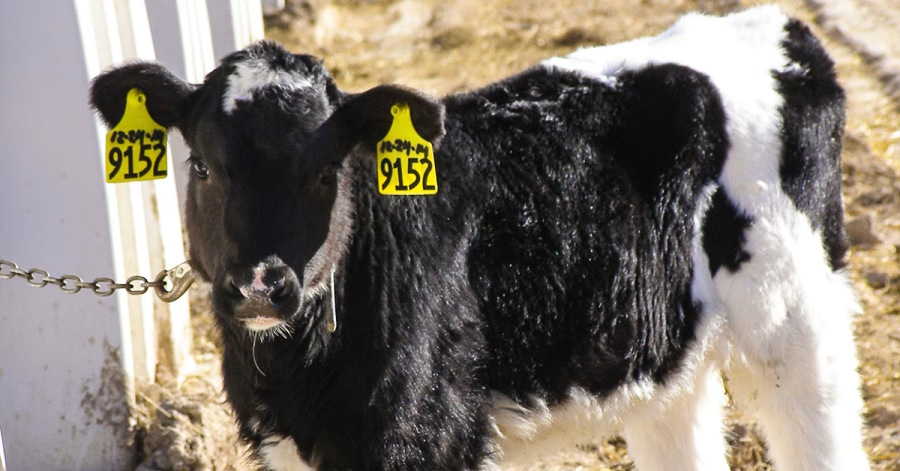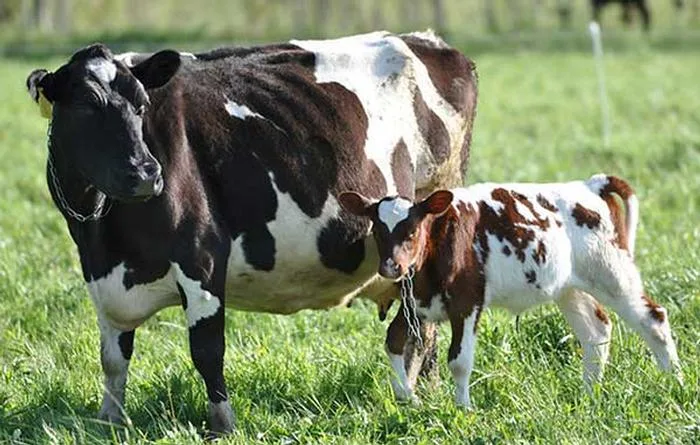Explore the influence of rumen environments on the health of dairy calves. Can these young animals flourish even with low rumen pH and elevated VFA levels? Delve into their unexpected resilience.

The future productivity and sustainability of dairy herds hinge on the early stages of calf development. At birth, a calf’s rumen is non-functional, necessitating a liquid, milk-based diet. This reliance on milk delays the rumen’s necessary physical and metabolic growth, as well as the introduction of solid meals.
The long-term health and productivity of dairy calves may be influenced by our current feeding techniques and their impact on rumen development. Could our focus on rumen health be overlooking more complex issues? Might our current methods be affecting other crucial digestive system organs?
Find out how knowledge of the mechanics of the hindgut could transform the calf diet and enhance feeding techniques.
The Crucial Role of Rumen Development in Shaping Future Production Potential of Dairy Calves
Their rumen development is essential for calves’ future production potential on dairy farms. Because their rumen is non-functional at birth, calves eat a milk-based diet. As they mature, introducing solid feed like calf starter becomes crucial for rumen development.
Volatile fatty acids (VFAs) such as butyrate, which are vital for rumen papillae development, are produced by calves beginning fermentation in the rumen. This development improves rumen functioning generally and nutrition absorption specifically. More calf starting increases fermentation and VFA synthesis, hence hastening rumen growth.
Usually, a week after cutting the milk supply, the National Academies of Sciences, Engineering, and Medicine (NASEM) suggests weaning calves only when their calf starting intake exceeds 1.5 kg daily. This strategy increases metabolic growth, therefore guaranteeing improved production and wellness.
Rumen Acidosis: A Metabolic Disorder in Dairy Cows vs. Resilience in Calves
Usually caused by too much carbohydrate fermentation, rumen acidosis in dairy cows results from a pH below 5.5 for prolonged durations. Reduced feed intake, lower milk output, poor fiber digestion, inflammation, liver abscesses, and laminitis from this disorder seriously compromise herd health and productivity.
Research has shown that dairy calves demonstrate remarkable resilience to low rumen pH values—down to 5.2—without any clinical discomfort or growth problems. This study revealed that despite increased VFAs or lower rumen pH, body temperature, respiration rate, and pulse rate remained constant. Furthermore, total tract nutrient digestibility remained steady, and a typical problem in adult cows, hindgut acidosis, did not show up. This resilience should give us confidence in their ability to adapt and thrive in various conditions.
These results show basic variations in the rumen health of calves and older cows. Although rumen acidosis causes severe effects on adult cows, calves may adapt and even flourish in comparable circumstances, indicating a need to rethink dietary plans for the best development and growth.
Uncharted Territory: Evaluating the Impact of Rumen Conditions on the Hindgut in Dairy Calves
Recent studies have shown that our strong emphasis on rumen growth has blinded us to the intestines, especially the hindgut (cecum and colon). This control ensures that any harmful consequences of low rumen pH on the hindgut would go unreported. Low rumen pH in older cows drives undigested starch to the hindgut, where fast fermentation may cause acidosis and barrier collapse.
Research on hindgut acidity is scant in calves, and the consequences of low rumen pH or high VFA concentration on the hindgut are unknown. Scientists investigated how varying pH and rumen VFA levels affect intestinal and calf health.
The research employed a controlled design, focusing on cannulated calves to investigate the effects of various rumen conditions. The researchers evaluated the impact of different rumen pH levels and VFA concentrations. Calves aged twenty-one, thirty-five, and forty-nine days had their rumens drained and supplemented with a physiological solution. The solutions varied in VFA concentrations (285 mM or 10 mM) and pH (6.2 or 5.2).
Four hours of maintenance for these circumstances followed the removal of the solutions and restoration of the natural rumen contents. This lets the researchers assess the effect of various rumen conditions on the calves by measuring growth, intake, clinical health indices, and digestive efficiency.
Resilience Redefined: Calves Thrive Amidst Low Rumen pH Challenges.
| Animal | Rumen pH (Post-Feeding) | VFA Concentration (mM) | Impact on Health |
|---|---|---|---|
| Young Calves | 5.2 | 285 | No negative impact on growth or health |
| Mature Cows | 5.5 (or lower) | Varies | Negative effects on feed intake and health |
The research finds that dairy calves have excellent tolerance to low rumen pH. Though rumen pH levels dropped significantly, no harmful effects on clinical health measures—body temperature, respiration rate, pulse rate, fecal scores—were noted. This suggests that raising calf starting intake for improved fermentation and rumen development does not compromise general calf health. Calves sustain development and health throughout many rumen settings, even under situations that would harm adult cows.
Dairy farmers may boldly raise calf starting intake to promote rumen growth without worrying about harmful impacts on health. According to the research, newborn calves—whose tolerance to reduced rumen pH levels is notable—have different issues with rumen acidosis in older cows than others. Emphasizing increased starting intake to support rumen fermentation helps to approach calf nutrition more proactively. Such feeding methods help promote better rumen development, supporting general metabolic development and future production capacity. This method also helps ease the transition from a milk-based diet, allowing quicker and more successful weaning without sacrificing health criteria.
Surprising Stability: Minimal Hindgut Acidosis Risk in Calves Under Varying Rumen Conditions
The research shows that calf hindgut acidosis risk remains low even under different rumen conditions. Lower pH and higher ruminal VFA levels did not raise hindgut acidosis risk; instead, they appeared to promote hindgut stability. Critical fatty acids such as isobutyric and isovaleric remained steady and showed no notable effects on the hindgut.
Fascinatingly, calves with high ruminal VFA infusion had a higher hindgut pH. This result supports the theory that the hindgut may stay balanced despite variations in the rumen environment. These findings underline the robustness of dairy calves and imply that raising VFA levels in the rumen does not damage the hindgut, therefore supporting improving calf starting for improved rumen fermentation.
The Bottom Line
The research emphasizes how remarkably resistant dairy calves are to changes in the rumen environment. These deficient pH levels can endanger adult cattle. This flexibility lets us maximize rumen development feeding plans without compromising calf health. Future studies should find the reason for calves’ remarkable resilience, thereby allowing better feeding strategies that support balanced development and general digestive health, including the hindgut. Understanding the particular requirements of calves compared to older cows will help us to maximize their growth, health, and future output.
Key Takeaways:
- High starter intake, while essential for rumen development, is often linked to acidosis, yet calves exhibit resilience to this condition.
- Feeding larger volumes of milk before weaning delays rumen development due to reduced solid feed consumption.
- NASEM recommends waiting to wean calves until their calf starter intake reaches 1.5 kilograms per day to maximize rumen metabolic development.
- During the weaning transition, the rapid increase in calf starter intake can lead to lower rumen pH and potential acidosis, though calves are generally unaffected.
- Scientific focus has predominantly been on the rumen, often neglecting the potential impacts on the hindgut.
- Research shows that despite low rumen pH, calves’ overall health metrics such as body temperature, respiration rate, and fecal scores remain unaffected.
- Even under conditions that would induce ruminal acidosis in adult cattle, calves continue to show good growth and nutrient digestibility.
- High ruminal VFA concentration and low pH do not increase the risk of hindgut acidosis, contrasting with mature cows where this is a concern.
- The study highlights the remarkable resilience of calves to changes in rumen environment, underscoring the need for different feeding approaches compared to adult cows.
Summary:
Dairy herds’ future productivity and sustainability depend on the early stages of calf development. At birth, rumen is non-functional, necessitating a milk-based diet. As they mature, solid feed like calf starter becomes crucial for rumen development. Volatile fatty acids (VFAs) are produced by calves beginning fermentation in the rumen, improving rumen functioning and nutrition absorption. NASEM suggests weaning calves only when starting intake exceeds 1.5 kg daily to increase metabolic growth. Research shows dairy calves demonstrate remarkable resilience to low rumen pH values without clinical discomfort or growth problems. Future studies should explore the reasons for calves’ resilience, allowing better feeding strategies for balanced development and general digestive health.
Learn More:
For further insight into related topics that can enhance your dairy farm management strategies, check out the following articles:














